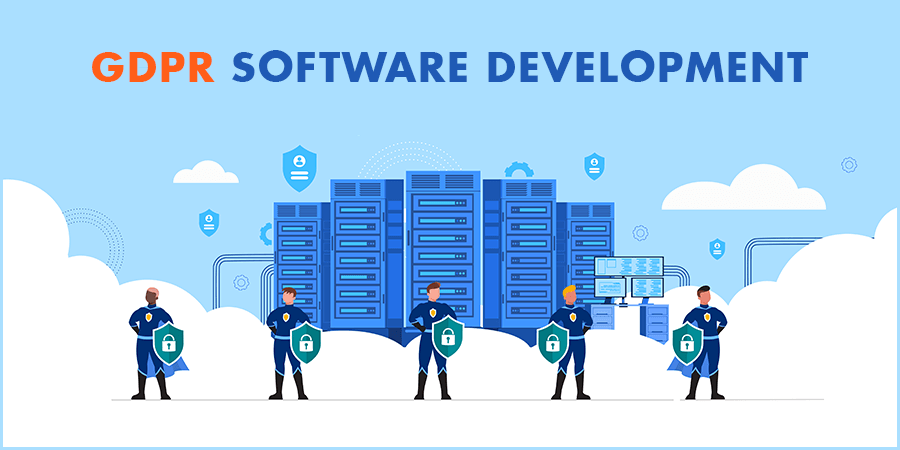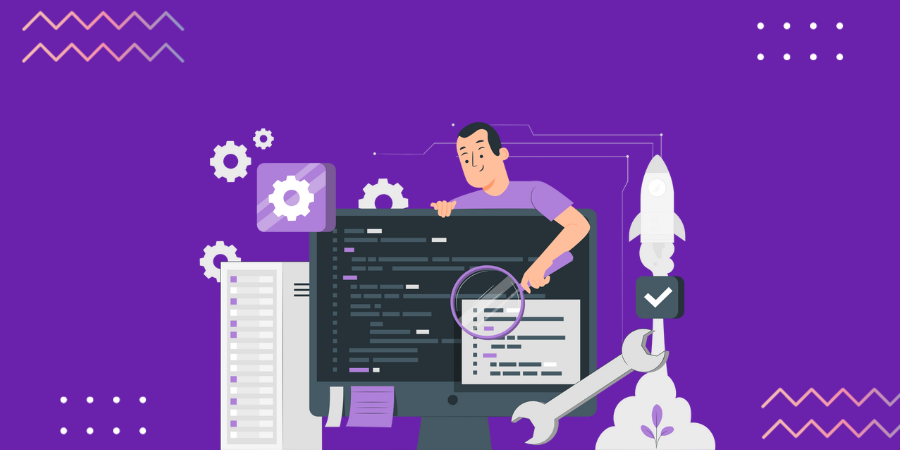You might have heard about GDPR or General Data Protection Regulation, but do you know exactly what it is and GDPR compliant software development and its privacy rules? If not, then the guide is for you. GDPR is actually a regulation of EU law (European Union law) on data protection and privacy in the EU (European Union) and EEA (European Economic Area). It is also known as transferring personal data outside the EEA and EU areas
The General Data Protection Regulation was first adopted on 14 April 2016 and is enforceable beginning 25 May 2018. It is built to address consumers’ concerns about collecting and their data. GDPR has a significant impact on how software organizations manage and handle their users’ data.
The regulations require businesses to protect the privacy and personal data of EU (European Union) residents. And non-compliance could cost organizations dearly. GDPR contains the entire data life cycle, including usage, storage, gathering, and data retention. General Data Protection Regulation applies to manual and automated data processing.
But for organizations to become GDPR compliant, they first need to understand what personal data is? Because one cannot find a solution without knowing the problems. So let’s have a quick look at what personal data is? Also, what are the essential steps you need to take to be GDPR compliant?
What is Personal Data?
With personal data, we mean all information of the individual that shows his/her identity. Different pieces of information when collected together can lead to the identity of a particular person.
For instance, the full name of a particular person is an obvious identity. But a person can also be identifiable with other information such as his/her address, physical characteristics, his/her occupation, pseudonyms, characteristics, etc.
GDPR Global Growth
The service market was valued at 1183.2 million USD in the year 2020 and it has been estimated that this value will increase by 4364 million USA by the year 2026. With this increasing concern over data security and privacy, the demand for GDPR is going to increase every single year. Some stats show us that nearly 8 out of 10 organizations follow GDPR and around 27% of the companiesspent more than half a million USD to become GDPR compliant.

Image Source: www.marketsandmarkets.com
Key GDPR Requirements for Software Development
Although GDPR does not focus on market segments and companies, it has the most evident impact on software development companies. Various web resources, services, mobile applications and solutions are the point of contact between organizations and end-users. They allow both parties to exchange, process and store personal data for continuous communication.
Before implementing GDPR, the European Union already had some privacy rules in place, all thanks to the EU personal data protection law. But GDPR is stricter, with legislation that is not so easy that many large corporations have spent millions of worth on GDPR consulting services and GDPR software overhauls.
Software developers can quickly implement GDPR related measures when building a new platform. Consider these tips for a GDPR complaint about software development vendors.
1. Run Risk Analysis
You need a suitable plan before you start working on regulatory compliant software. You need to understand the end-users, and what features related to data processing they will utilize. For instance, if you are about to design a mobile application, you need to request permission for location access.
Once you get a clear idea of the future product, you need to determine its components’ riskiest and most vulnerable. This will help you set priorities and design solutions with security and GDPR compliance in mind.
2. Pseudonymization by Default
Pseudonyms should be built for every individual, and data about the person’s identity should be stored in an area that is entirely partitioned and separate from other users’ data, such as essential information on the individual’s account within an app or software platform.
3. The Right to Be Portable
In this requirement, users must retain the ability to migrate their data from one service provider to another. For example, if you are giving mobile phone services, you will need to configure your software to enable users to take their phone numbers to another service provider.
4. Important Data Breach Reporting
If your company suffers from a data breach, you need to inform users and law enforcement within 72 hours. This means you need to detect a data breach in concise order. When developing a mobile app or software, it is generally best to increase the security measures and include security breach detection and reporting tools that can send notifications.
5. Privacy By Design
EU General Data Protection Regulation requires privacy by default, which means that software, website, or mobile app must default to give users the highest level of privacy and security. Let’s talk with the example; instead of automatically using a person’s email address or name as their username, your software must offer a random username during the account creation process.
Large organizations should appoint a data protection officer who can respond to any GDPR related requests and maintain documentation of all actions and measures performed to maintain GDPR compliance.
Documentation also plays a vital role in GDPR compliance as it is imperative. A software developer can develop a fully compliant platform, but that is insufficient if they do not have a way to export your platform compliant documentation. Therefore, documentation capabilities are the primary measure for maintaining GDPR compliance.
Essential Steps to Take To Get Closer to GDPR Compliance
Create a Private Default Setting
When beginning to work with any software, the user should have a setting with maximum privacy. In any case, if the user won’t make any changes in settings, the protection level needs to remain unchanged. The application shouldn’t require any action from users to obtain the maximum level of personal data.
Embedded Privacy
You need to introduce privacy to the consumer from the start, even before the first tiny piece of personal information gets into the system. Consumer privacy needs to be at the core of any software and should not be installed with some plugin. Lack of privacy can never be the price for application functionality, which means you cannot present your users with challenging functionality or privacy. This kind of software will be considered illegal when General Data Protection Regulation becomes effective.
Recognize Personal Data
Set up and maintain personal data. It can be a different document or can be a part of the Information Asset Register. You can use this tool to keep records of personal details that you collect, indicating places where you have stored it, storage period, data accessibility, access level, etc. You need to determine in advance who is maintaining this registry.
Minimize Personal Details
The use of personal details needs to be reduced to a minimum sufficient level to attain the processing goal. One needs to minimize user identification whenever it is needed. You need to embed the function of deleting used and unnecessary data.
Taking this step not only protects the privacy of users but also saves you from the hassle in case of a sudden hacker attack on the application. You don’t need to notify the authorities or the subjects of the personal data about the data violation or need to pay a penalty for an inattentive attitude to the rule of data minimization
Track Record of GDPR Rules
Companies require not only to give focus to GDPR but also to be good at documentaries that they are GDPR compliant. Even if the companies are following all the GDPR, but forgot to document it, in that case, all undocumented measures will be considered unimplemented.
The audit will nothing has happened in the company to become GDPR compliant. That is the reason it is also suggested that companies need to hire DPOs, whose only duty will be to do documentation towards GDPR compliance.
Informed Consent For the Processing of Personal Data
Companies require not only to give focus to GDPR but also to be good at documentaries that they are GDPR compliant. In any scenario, if an organization forgot to document it, in that case, all undocumented measures will be considered unimplemented.
The text should be understandable and clear in tone. You have to give comprehensive information on the processing of user’s data: What data, where, when, by whom and what for? Moreover, if a user is inactive or silent that does not indicate that he/she agrees.
Bottom Line
In this competitive world only having a website is not sufficient. It should be good enough to protect customer’s private data and information. GDPR compliance software development not only helps developers to save from paying heavy fines but also provides your business with a competitive edge. If you want to stay in the competition and want financial protection and reputation, you need to make sure that your software is GDPR compliant.
If you want to gather more information, Nascenture’s experts can help you in any manner as we are a reliable software development company specializing in Mobile app development, Web design, Ui/UX design, and digital marketing.





